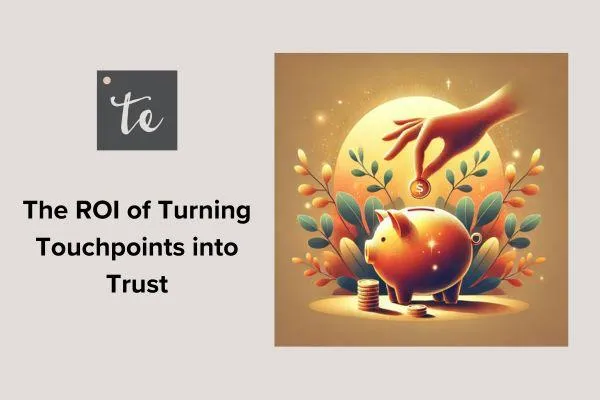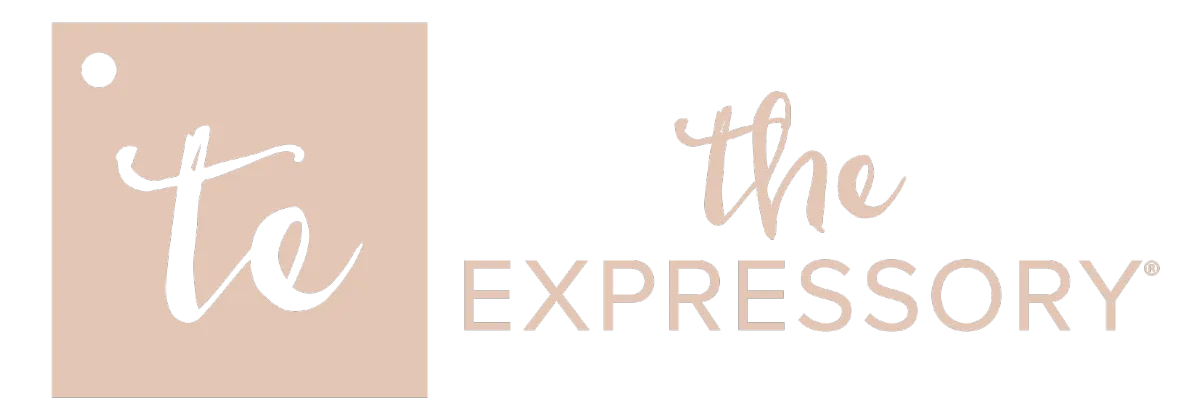
What Swimming Teaches Us About Team Relationships
In my latest video, I break down how swimming teaches us the importance of these relationship-building efforts and the specifics of what we as leaders need to nurture with our teams.
Holiday Gift Insights - What Everyone Else Is Doing
In an effort to simplify the decision-making process, we're sharing some of the trends we've seen with gifting over the years. We're even sharing our best seller and why that gift had such success.
What Makes A Successful Holiday Gift? The Travel Bag Edition
Last year we had the opportunity to work with one of our clients in the travel and tourism space to design an experience that delivered their highest engagement yet.

The ROI of Turning Touchpoints into Trust
In business, trust is the currency that moves mountains. It transforms leads into loyal clients, retains employees through tough times, and fosters relationships that withstand market pressures. Yet, trust isn’t a given. It’s earned through thoughtful, consistent engagement. And the touchpoints you use for that engagement aren’t just checkboxes on a marketing plan. They’re the building blocks of trust.
The Expressory’s recent market research reveals that 61% of service professionals believe trust is what most builds deep connections, while 53% cite time constraints as a major barrier to building these relationships. Combine that with data from the same research showing 80% agree that relationship-building is critical, and the picture becomes clear. Businesses must shift from transactional interactions to strategic engagement if they want to thrive.
Let’s explore how turning simple touchpoints into meaningful moments can shorten sales cycles, increase conversion rates, and ultimately deliver measurable ROI.
The Cost of Neglecting Relationships
It’s easy to blame external factors when relationships falter. Our research shows that 31% of respondents attribute economic conditions to strained professional connections, while 23% point to personal life events and 20% to workload changes. Women, in particular, feel the weight of personal and workload pressures—highlighting a significant disparity that businesses need to acknowledge.
But it’s not just external challenges. In a world where time constraints are cited by over half of respondents as the biggest obstacle to relationship-building, the deeper issue lies in how businesses prioritize connection. Without a structured engagement strategy, relationships are left vulnerable to neglect, and businesses miss out on the trust that leads to loyalty and growth.
Why Strategic Engagement Matters
Strategic engagement is more than simply reaching out to check in or following up after a sale. It’s about creating a consistent, thoughtful system of touchpoints that make people feel seen, valued, and cared for. Whether you’re engaging clients, employees, or partners, the goal is to shift from transactional interactions to meaningful connections that foster trust and loyalty.
The foundation of this approach lies in the principles of social psychology, specifically understanding what people need most in relationships: to feel understood, validated, and cared for. Link to previous blogs. These elements are at the heart of what builds trust, fosters mutual respect, and creates the kind of emotional connections that drive deeper loyalty. When these psychological insights are intentionally built into your engagement strategy, they can deliver:
Shorter Sales Cycles: Trust simplifies decisions. When potential clients feel understood and confident in your relationship, they move through the buying process more quickly.
Higher Conversion Rates: Tailored touchpoints aligned with individual priorities create confidence, breaking down hesitations and turning “maybes” into “yeses.”
Deeper Loyalty: Consistency and care leave lasting impressions. Research shows that 53% of professionals believe a culture of care directly impacts profitability. Loyal clients and employees not only stay—they become your strongest advocates.
Businesses that prioritize strategic engagement see the difference in their bottom line. It’s not about how much you say but how consistently and thoughtfully you say it, turning touchpoints into trust and trust into growth.
Building a Culture of Care
Developing a strategic engagement strategy doesn’t happen overnight—it’s a deliberate process that starts with embedding care and connection into your company’s culture. Companies that succeed at this don’t treat engagement as an afterthought; they make it a priority that guides every interaction. The key is to start small, with consistent actions, and scale those efforts into a structured system over time.
Here are three simple yet impactful ways to begin:
Encourage storytelling within your team. Regularly share examples of successful touchpoints and their impact on relationships. Whether it’s a handwritten note that brought a client back or a small gesture that made an employee feel valued, these stories highlight the power of thoughtful engagement and inspire others to follow suit.
Invest in tools to streamline engagement. Technology, like CRMs and automated reminders, helps ensure no client, prospect, or team member falls through the cracks. These tools don’t replace personal connections but enhance your ability to deliver them consistently and effectively.
Celebrate meaningful milestones. Acknowledge not just your company’s achievements but also the personal wins of your clients and employees. Whether it’s a promotion, a new baby, or a project well done, recognizing these moments shows genuine care and builds stronger bonds.
Expanding Beyond the Basics
While these actions form a strong foundation, developing a strategic engagement plan means going deeper. In our blog posts, we’ve discussed the importance of prioritizing your relationships and identifying key connections. As outlined in the book, Relationship-First Strategic Engagement, The Expressory’s Strategic Engagement Methodology™ outlines creating an effective strategy with these essential steps:
1. Prioritize Your Relationships: Identify the clients, employees, and partners who have the most impact on your business and focus your efforts on these key connections. Not sure where to start? Check out our blog, "Identifying and Prioritizing Key Connections” for actionable tips.
2. Research and Personalize: Dive deeper into the lives and interests of those you’re connecting with. What matters most to them? What milestones are they approaching? Use this information to craft personalized, meaningful touchpoints.
3. Design Thoughtful Touchpoints: Move beyond generic gestures. Use what you’ve learned to create touchpoints that align with the recipient’s values, interests, and goals.
4. Implement a System for Consistency: Consistency is key to building trust. Set up routines, processes, and tools to ensure regular engagement without overwhelming your team.
5. Track and Adapt: Engagement strategies aren’t static. Regularly assess what’s working and refine your approach based on feedback and results.
From Culture to ROI
Strategic engagement is about more than just actions. It’s about creating a culture where every team member values relationships and understands the impact of care. By starting small, building on successes, and following a structured plan, you can transform your approach to client and prospect engagement.
The results? Shorter sales cycles, higher conversions, deeper loyalty, and a company that people are proud to work with. Start building your culture of care today—because trust doesn’t just happen. It’s created, nurtured, and grown, one thoughtful touchpoint at a time.
Reflect and Rebuild: 5 Key Questions for Leaders
Here are five questions every leader should ask to ensure they’re building trust through thoughtful touchpoints:
1. Am I prioritizing long-term relationships over short-term wins?
It’s tempting to chase quick results, but sustainable growth comes from investing in trust. Are you playing the long game with your clients, prospects, and partners?
2. Do I have a system for consistent engagement?
Touchpoints lose their impact when they’re sporadic. A structured plan ensures no one feels forgotten.
3. How well do I understand the unique needs of my audience?
Blanket strategies rarely work. Are you taking the time to tailor your engagement to what matters most to each individual or group?
4. What barriers are holding us back from deeper connection?
Is it time, budget, or simply a lack of focus? Identifying obstacles allows you to address them head-on.
5. Does our culture reflect a commitment to care?
Engagement starts from within. If your team doesn’t feel valued, that energy will ripple outward to clients and partners.
Reflecting on these questions can reveal gaps in your strategy and highlight opportunities to strengthen connections.
If you’re unsure where to start, let’s connect. We’re always happy to provide some suggestions to help improve your relationship building efforts. We’re here to help. Schedule a conversation or join one of our community Q&A sessions to learn more.
Address:
1500 S. Sylvania Ave #106
Sturtevant WI 53177
Phone:
414.243.8971

